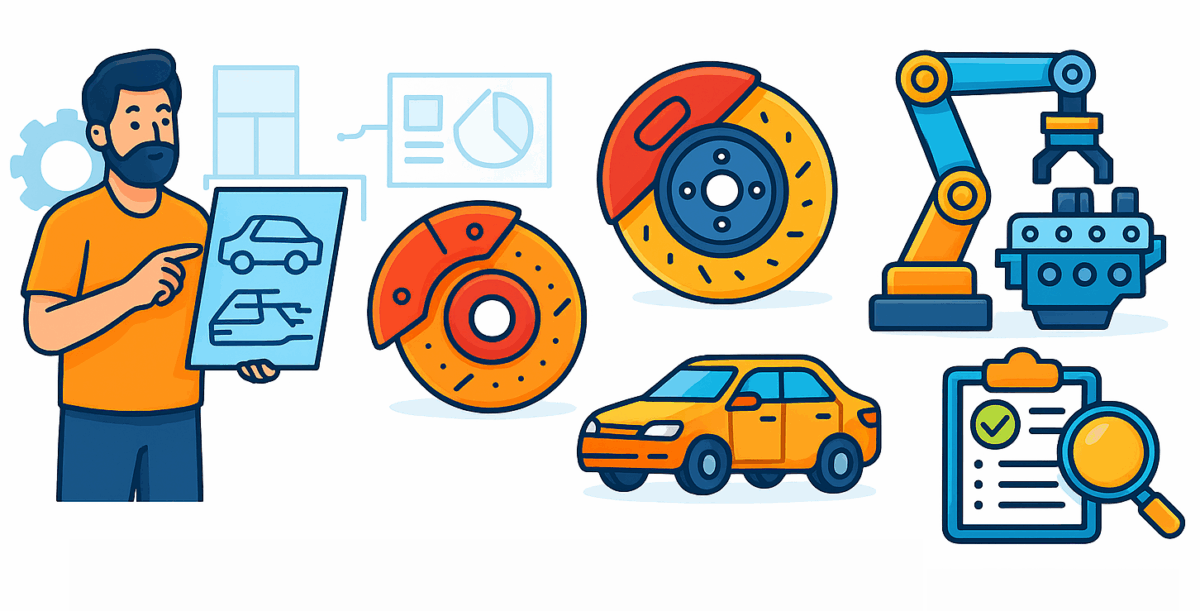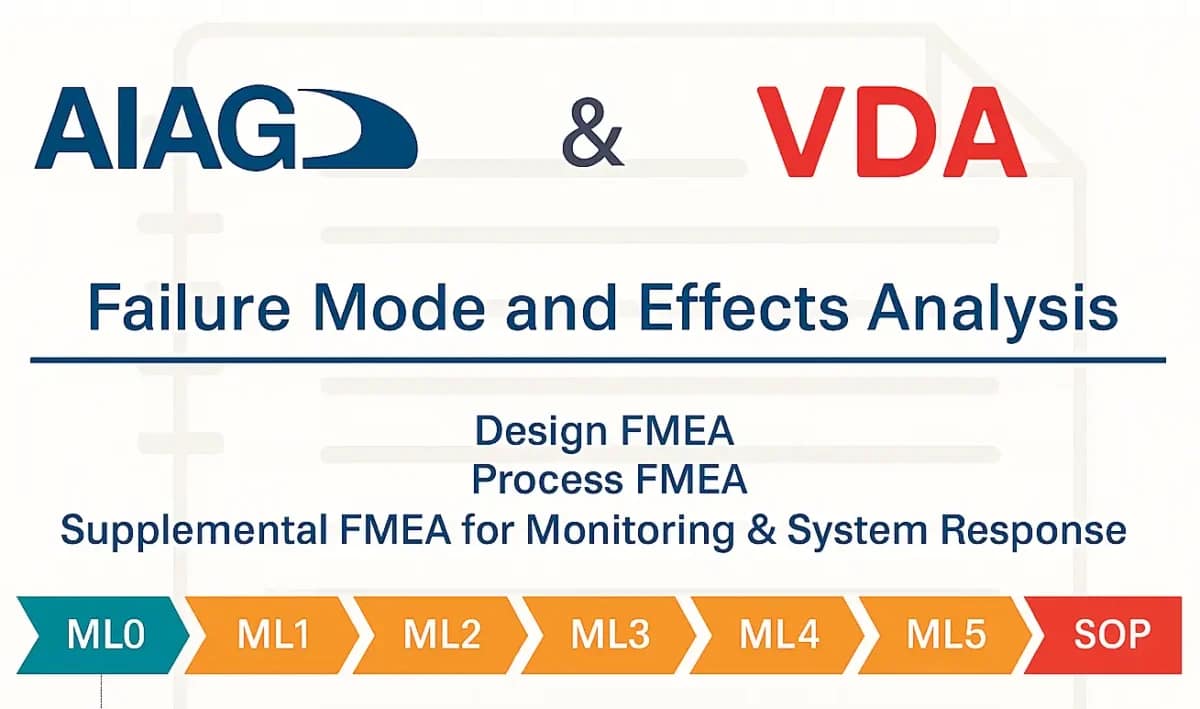
Integrated Guide to Production Part Approval: AIAG PPAP + VDA PPA
In the global automotive industry, the ability of suppliers to consistently deliver components that meet customer requirements is a fundamental expectation. Two major standards define how suppliers must demonstrate this capability:
- AIAG PPAP (Production Part Approval Process) – widely used in North America
- VDA PPA (Production Process and Product Approval) – used by German OEMs and their supply chains
This guide integrates both standards into a single structured approach, enabling suppliers to meet the expectations of major OEMs such as GM, Ford, Stellantis, Volkswagen, BMW, and Mercedes-Benz.
🎯 Purpose of PPAP/PPA
The core objectives of both AIAG PPAP and VDA PPA are to:
- ✅ Verify that the supplier fully understands all customer engineering and specification requirements
- ✅ Confirm that the production process can consistently manufacture conforming parts
- ✅ Ensure production readiness before serial launch
- ✅ Provide documented evidence of compliance to customer requirements
📌 When Approval Is Required
PPAP or PPA submission and customer approval are typically required in the following situations:
- Introduction of a new part or product
- Engineering or design changes
- Tooling changes, replacements, or refurbishments
- Relocation of the production site
- Change of supplier or material source
- Tooling inactivity for more than 12 months
- Reuse of existing parts in new projects (carry-over)
- Upon customer request
🔔 Both AIAG and VDA standards require that customers are notified and approvals are obtained before implementing such changes.
📄 Unified Documentation Requirements
The following list combines the 18 PPAP elements from AIAG with the corresponding VDA PPA requirements. All documents should be prepared unless explicitly waived by the customer.
- Design Records – Engineering drawings, CAD data, GD&T
- Authorized Engineering Change Documents – Approved changes not yet reflected in drawings
- Customer Engineering Approval – Often documented in EMPB (VDA)
- Design FMEA – Risk analysis using harmonized AIAG-VDA format
- Process Flow Diagram – Visual mapping of the manufacturing process
- Process FMEA – Risk analysis for manufacturing failures
- Control Plan – Product/process characteristic controls and reaction plans
- Measurement System Analysis (MSA) – Gage R&R, bias, linearity, stability
- Dimensional Results – Actual measurements with drawing references
- Material / Performance Test Results – Chemical, physical, and functional testing
- Initial Process Studies – Cpk/Ppk or justified alternatives
- Qualified Laboratory Documentation – ISO/IEC 17025 accreditation
- Appearance Approval Report (AAR) – For appearance-critical parts
- Sample Production Parts – From actual production run
- Master Sample – Retained reference sample
- Checking Aids – Fixtures, templates, gauges
- Customer-Specific Requirements – OEM-specific forms, portals, formats
- Part Submission Warrant (PSW) / EMPB – Signed declaration of conformity
📦 Submission Levels
AIAG PPAP Levels
- Level 1: PSW only
- Level 2: PSW + limited supporting data
- Level 3: PSW + full documentation (default)
- Level 4: PSW + customer-defined requirements
- Level 5: PSW + full documentation + on-site review
VDA PPA Levels
- Level A: Product samples only
- Level B: Samples + selected documentation
- Level C: Full documentation (default)
- Level D: Full documentation + audit or on-site review
📊 Process Capability Requirements
AIAG Criteria:
- Cpk/Ppk ≥ 1.67 → Approved
- 1.33 ≤ Cpk/Ppk < 1.67 → Conditional approval (monitoring required)
- Cpk/Ppk < 1.33 → Corrective actions required
VDA Criteria:
- Cp/Cpk ≥ 1.33 recommended
- Alternative methods (e.g., control charts, long-term capability) acceptable if justified and agreed with the customer
📏 Measurement System Analysis (MSA)
- AIAG: Requires Gage R&R, bias, linearity, and stability studies
- VDA: Requires test equipment capability (Cg/Cgk) or equivalent
Standardized measurement methods may reduce MSA requirements if mutually agreed upon.
📋 Final Approval Documents: AIAG vs. VDA
| Item | AIAG | VDA |
|---|---|---|
| Final Form | PSW | EMPB |
| Language | English | Often German |
| Signature | Supplier + Customer | Supplier + OEM Quality |
| Traceability | Revision control | Maturity level tracking |
⚙️ Special Cases
Bulk Materials
- AIAG: Use Bulk Material Checklist
- VDA: Risk-based sampling and documentation
Tires
- AIAG: AAR and master samples not required
- VDA: Emphasis on performance testing and mold certification
Truck Industry
- AIAG: Truck-specific PSW form
- VDA: May require additional documentation for low-volume parts
📊 Summary Table
| Topic | AIAG PPAP | VDA PPA |
|---|---|---|
| Origin | USA (AIAG) | Germany (VDA) |
| Structure | 18 fixed elements | Risk-based, flexible |
| Submission Levels | 1–5 | A–D |
| Final Document | PSW | EMPB |
| Audit | Level 5 | Level D |
| Software | Optional | Often required |
| Legal Compliance | Optional | Required if applicable |
| Environmental | Optional | Required if applicable |
✅ Best Practices for a Successful PPAP/PPA
- Start preparations early and integrate with APQP, DFMEA, PFMEA
- Confirm submission levels and customer-specific requirements at project kickoff
- Maintain traceable records of raw data, test results, equipment IDs, operators, and dates
- Use a centralized, controlled digital repository for documentation
- Engage customer quality teams early if capability or validation results are marginal
💡 Key Takeaway
A complete, traceable, and well-organized PPAP/PPA package — aligned with APQP deliverables and risk analysis — reduces approval cycle time, shortens launch timelines, and improves product reliability in serial production.
By integrating AIAG and VDA approaches, suppliers position themselves for success across global automotive OEM programs.


